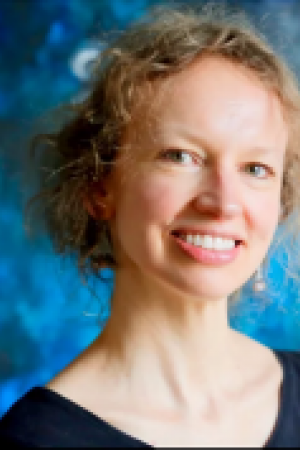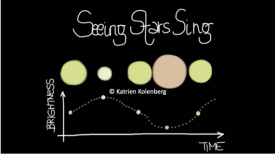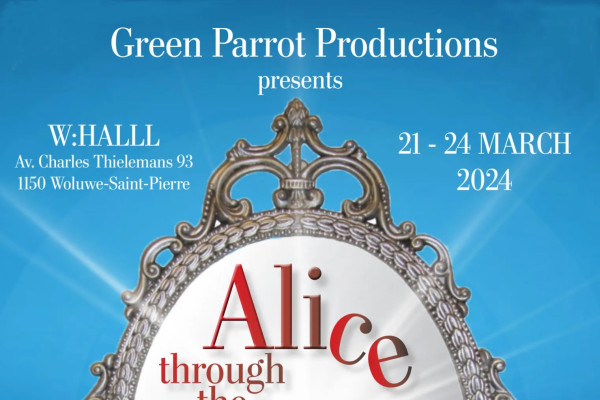The monthly lecture of ISG was presented by Katrien Kolenberg, a Belgian astrophysicist, a professor of astrophysics at the University of Leuven and the Free University of Brussels.
On 13 September the audience was surprised to find on the podium a youngish delicate woman holding a cello in her hands. But everything became clear when she began her presentation. Our universe is impregnated with sounds, from the tiniest to the loudest which provide a precious tool for the astrophysicists for study. We try to make sense of the cosmos that surrounds us in different ways. Using the scientific methods, we build models that help us to predict multiple aspects of our existence. Through art we want to make sense of our existence and to reflect upon human conditions. Both things are indispensable tools for studying.
Katrien finds satisfaction connecting astrophysics and music. The reason is that the space is full of sounds. Though at first sight it does not look like that. She takes her cello and touches a string, it vibrates. We hear the sound. She explains: “We hear it because it lies within the human range of pitch, which is about 20 000 vibrations per second. But the celestial bodies though also emanate sounds, a human ear does not hear, because the sounds are too low for us. Now the scientists have learnt how to speed up the sounds of heavenly bodies so that we can hear them.”
Animals hear much lower sounds, insects much higher. We have our window for sounds. The celestial bodies, the planets which turn around a star also send off sounds, for example from the earthquakes. The space has a lot of sounds, which we can catch with the instruments. Our planet sends off sound waves from earthquakes. By the tremble of the cello Katrien demonstrated the sound of an earthquake, a sign that this is a planet. We can also hear the vibration of the planet Mars. Stars are different, they send off light. All the light of the Universe is coming from stars. They are very far away, so far away that we can’t get to them. Our nearby star is our sun, it is 150 000 000 km from the earth. Stars are Katrien’s favourite subject. The problem is that stars are so far that nobody can get to them. We see many stars around. They are giant clouds of ISG Newsletter October 2021 27 September 2021 www.isgbrussels.be Page 7 of 21 gas, which is why they are shining. It is a chemical reaction of the star. Stars live much longer, and many are much bigger than our sun. They also live and die like humans. But their life is on a different scale. There are instruments that measure their vibration which proves that they change as they age. Katrien touched the strings again to show us the vibrations of stars as opposed to the strings of the cello. The stars’ vibrations vary, from a fraction of a second to tens of scores. There are noisy stars. We can’t hear their vibration, because it is very low, but we can see that stars sing. They contract, get hotter and get brighter. Then they get dim, cool off. We see it through the telescopes and understand that they vibrate. Small dense stars make stellar sound. We speed it up and try to listen. We speed it up to 1 000 000-pitch so we can hear it.






